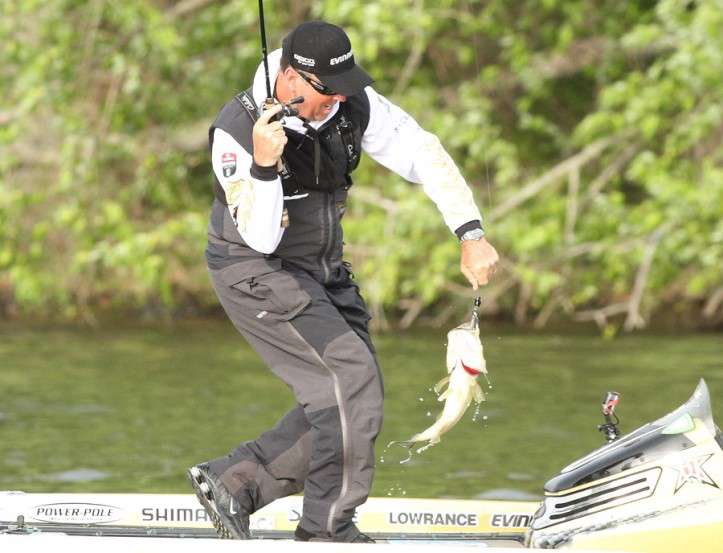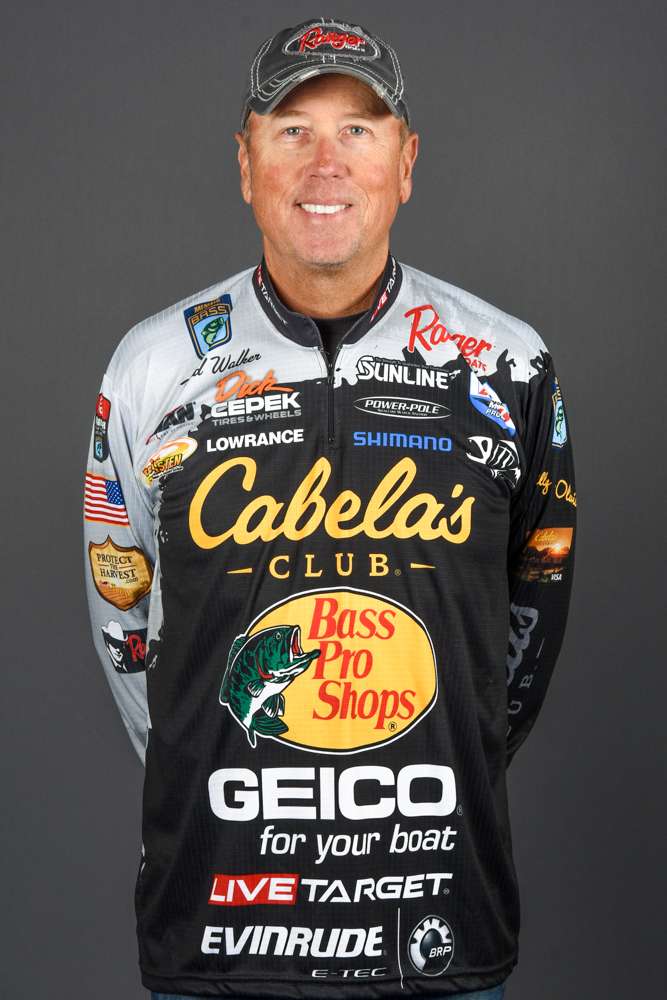
As I travel the country meeting and talking with anglers about bass fishing, I get a lot of questions about reels, especially from beginners looking to buy their first baitcaster. So I thought I’d dedicate this blog to some of those who are shopping for reels but are unsure of what they’re after.
For some reason, the most common question I’ve been getting lately is about right-handed vs. left-handed baitcasting reels. As you might know, most spinning reels allow the cranking handle to be switched to the left or right side of the reel, so this is not an issue with spinning gear. But with baitcasters, the handle is not swappable, meaning the angler either has to choose a “right-handed” reel (crank handle on the right) or a “left-handed” reel (crank handle on the left).
This happens to be a subject that hits close to home with me, mainly because I’m truly right handed but I use “left-handed” reels.
So the first thing I want to clear up is the common misconception that “left-handed” reels are only for left-handed people – this is simply not true. Again, I’m right-handed and use “left-handed” reels. On the contrary, one of my fishing heroes, the legendary Denny Brauer, is left-handed, but uses “right-handed” reels.
When it comes to baitcasters, you cannot purchase reels based on whether you are naturally right or left-handed. You have to experiment with a baitcaster to see what feels most comfortable to you. Most anglers who are right-handed will usually cast and reel with the right hand: a cast is made with the right hand, then the rod and reel is switched over into the left hand and reeling is done with right hand. But for me that never felt comfortable. I would cast with my right hand and then keep the rod and reel in my right and just reel with my left. In the beginning of my career I was self-conscious about this because it meant I had to buy “lefty” reels, yet I knew I wasn’t left handed. Thirty years ago left-handed reels were not very common and I figured there must be something wrong with the way I was fishing – but there wasn’t and I still fish that way today. The fact is some people feel more comfortable reeling right-handed and some are more comfortable reeling left-handed, and it really has nothing to do with whether you are right or left handed. Now some anglers may argue that there are advantages or disadvantages to switching hands or not switching hands or to reeling right or reeling left. Some pros say it’s good idea to learn how to pitch and flip without having to switch hands because it’s more efficient. I don’t have to switch hands when I pitch and flip and I still get beat by guys who do switch, so I’m not sold on the concept of training yourself one way or the other.
The best way is the way that feels most comfortable to you. Accuracy is of utmost importance so whatever it takes to get the bait where it needs to be should determine what works for you. The good news is there are many more reel companies that make “lefty” reels these days compared to 30 years ago. So, again, don’t feel like it’s wrong if your reeling tendency is with the left.
As a side note, I think one reason that the righty/lefty question has become such a hot topic is because most truly right-handed people start fishing with a spinning rod with the crank handle on the left side of the reel. Then when they graduate up to a baitcaster, they want to keep reeling with the left, but the first baitcaster they’re handed is a “righty” and suddenly they’re confused. Don’t worry. If this is the case with you, try a lefty baitcaster and see if that feels better.
Now, another hot topic in baitcasters these days has to do with gear ratios. Back in the good old days, reel ratios hovered right there around the 4.8:1 to 5.1:1 ratio. Then things got a little faster with 6.1:1 and then 6.4:1. That was followed by 7.1:1 and now we’re getting into 8:1 and even 9:1 gear ratios. This leads some beginners to think if they get all super duper fast ratio reels they can fish at super high speeds like KVD.
Unfortunately it does not really work that way. Faster is not always better in fishing reels.
In my opinion, super high-speed reels, let’s say 7.5:1 and up, are very niche specific reels. To put it another way, super high-speed reels are not exactly general, all purpose reels. For me, these speedster reels are excellent for flipping and pitching. Contrary to what it may seem, flipping and pitching is not a slow, pokey way to fish. It’s actually a game of multiple presentations and there is no doubt that a super high-speed reel helps with this. Once a presentation has been made, being able to zip your line in quickly and get it right back out there is key. Also, when a fish bites and swims at you, being able to take up that slack quickly to catch up to the fish and set the hook is a big plus. But for me, that’s where the benefits of speed end. Any lure that involves casting and reeling back in can be handled with anything in the 6:1 to 7:1 range. In fact I still prefer the “slower” 6.1:1 ratio reels when using lures that require a specific speed to work correctly. For instance, a Chatterbait is a deadly lure that requires just the right speed to reach its optimum vibration. Burning a Chatterbait with an 8.1:1 reel probably is not going to do you any favors.
Crankbaits also require reaching a precise speed to work at their best and that exact speed varies drastically across different brands and sizes of crankbaits. A square-bill crankbait has a different “sweet spot” in retrieval speed than a 10- to 15-foot runner, which is different than a 20- to 30-foot diver.
Reel ratios in the 6.1:1 to 6.4:1 range really have the widest scope of versatility for all different kinds of lures – this is the “jack of all trades” ratio range. Crankbaits, spinnerbaits, buzzbaits, Texas-rigged worms, rattle traps, jigs, Carolina-rigs and yes, even flipping, pitching and punching can be done with this ratio reel.
If you’re looking to graduate to a baitcaster soon, don’t be overwhelmed or intimidated by being a “righty” or a “lefty” or feel like you need super-high gear ratios to fish “faster.” There is no right or wrong in any of it – stick with what feels right to you to get the lure where it needs to be and to work it properly.





